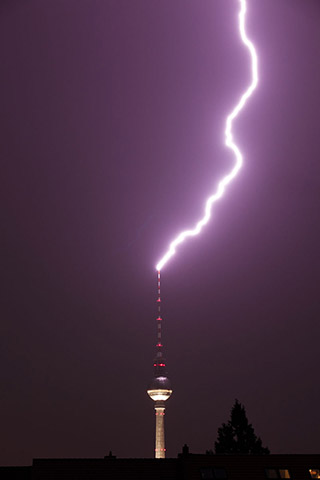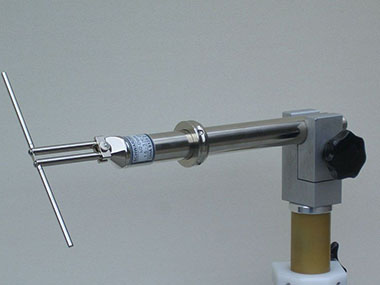The Electromagnetic Spectrum
The electromagnetic (EM) spectrum is the range of all types of electromagnetic radiation. Radiation is energy that travels and spreads out as it goes – the visible light that comes from a lamp in your house and the radio waves that come from a radio station are two types of electromagnetic radiation. The other types of EM radiation that make up the electromagnetic spectrum are microwaves, infrared light, ultraviolet light, X-rays and gamma-rays [text by NASA's Imagine the Universe].
The behavior of electromagnetic radiation depends on its wavelength. According to this behavior the spectrum is classified into different regions, which fall each within a different range of frequencies. The image below shows the order and range of the different regions of the spectrum.
Radio: Your radio captures radio waves emitted by radio stations, bringing your favorite tunes. Radio waves are also emitted by stars and gases in space.
Microwave: Microwave radiation will cook your popcorn in just a few minutes, but is also used by astronomers to learn about the structure of nearby galaxies.
Infrared: Night vision goggles pick up the infrared light emitted by our skin and objects with heat. In space, infrared light helps us map the dust between stars.
Visible: Our eyes detect visible light. Fireflies, light bulbs, and stars all emit visible light.
Ultraviolet: Ultraviolet radiation is emitted by the Sun and are the reason skin tans and burns. "Hot" objects in space emit UV radiation as well.
X-ray: A dentist uses X-rays to image your teeth, and airport security uses them to see through your bag. Hot gases in the Universe also emit X-rays.
Gamma ray: Doctors use gamma-ray imaging to see inside your body. The biggest gamma-ray generator of all is the Universe [text by NASA's Imagine the Universe].
Some of these regions might be dividable into more regions, like long radio waves and short radio waves. Some classifications also include a Terahertz region, located between Infrared and Microwaves.
Light and electric current are two phenomena which now have been linked to vortex movement by the infinity theory. Light and electric current have a clear position within the transformation sequence. Their location in the sequence is known. Therefore it is understandable that the location of the electromagnetic spectrum can be determined. The spectrum actually runs through the centerline of the transformation cycles. If you look at the graph image below, which shows the cycles of the transformation sequence set out as a growing sine curve, then all you need to know to find the electromagnetic spectrum is that the spectrum runs through the centerline of the sequence. Every time that the movement crosses the centerline, that movement takes an electromagnetic form. Two known examples of such movement are light and electric current.
Every known region of the electromagnetic spectrum is located within one half-cycle of the sequence. Radio waves belong to the third lower half-cycle (and perhaps also the fourth lower half-cycle, this is where the long radio waves could be located). Microwaves belong to the second lower half-cycle. Infra-red light belongs to the first lower half-cycle. The visual light region belong to the first upper half-cycle. X rays belong to the second upper half-cycle. Gamma rays we find in the third upper half-cycle. It is assumable that more of these regions exist, yet it is not sure if those phenomena located at more higher or more lower half-cycles are detectable as electromagnetic energy.
Volume of Vortices
It is important to know that all vortices that are solely electromagnetic, are vortices that have no volume, with one exception, which is light. The EM spectrum line, which is the location of the electromagnetic spectrum within the transformation cycles, is where vortices have no volume. This line looks like a line when the cycles are plotted in 2D, but the line is actually a plane and this can be demonstrated when the graph is plotted in 3D. Vortices above the line, which is the positive side of the sequence, have a positive (non-inverted) volume. Vortices below that line, which is where the negative side of the sequence is located, have a negative (inverted) volume.
Vortices with a negative (inverted) volume are plasma state vortices. Vortices with a positive (non-inverted) volume are non-plasma state vortices. The first are vortices whose velocity can be considered to be negative in direction, while the latter are vortices whose velocity can be considered to be positive in direction. This influences the direction of time movement for all matter that is residential within that vortex (thus much much smaller than the vortex itself).
On the EM spectrum line itself the vortices have zero volume (keep in mind that the line is actually a plane). They are not physical plasma vortices or physical non-plasma vortices, but they're merely electromagnetic vortices.
The bigger the distance to the centerline, where we find the electromagnetic spectrum, the bigger the volume of the vortex is. For this reason the cycles of the transformation sequence are always plotted as a growing sine curve, because the vortices at the start of a half-cycle grow from zero volume to maximum volume at the central balance point, and then shrink back to zero volume at the end of the half-cycle. At each consecutive half-cycle this growth is bigger, manifesting itself in bigger vortices.
It is important to know that volume is not the same as size. A vortex that has no volume can still be of any possible size. A circular vortex with no volume for example can still be of any possible radius. A circle can be of no volume if it only consists of one line of movement that has no thickness within a three-dimensional space, but a circle always has a radius.
When a vortex has no volume, it means that the vortex has no periphery. The vortex only consists of a core. Every vortex that has a periphery in its basic form, can also exist as a vortex without a periphery, and thus without any volume. That happens when the position of the vortex in the transformation sequence deviates from the main sine curve. When the position is lower than the main sine curve the volume of the vortex is also lower than its standard form. The vortex looks like a thinner version of its normal self. The position of the vortex can also be completely on the EM spectrum line, thus within the realms of electromagnetism. In that case the vortex has no volume at all and its movement is purely electromagnetic.
The exception to this is light. This is because light is both a vortex and a wave. Or better said, the vortex becomes the wave. Light is located on the EM spectrum line as well but with light the entire wave breaks into our physical world and that wave becomes the vortex. So light is a vortex that is located on the EM spectrum line but has lots of volume, because it is also a wave.
How Do You Catch an EM Wave?
Because there are a wide range of vortices that connect to electromagnetic waves, it is possible for us humans to use these vortices to manipulate those waves. We can use those vortices to send signals into the onefield, and we can use those vortices to catch signals from the onefield.
To understand how electromagnetic waves can be caught we take a look at one particular human invention, one that provides us with an important clue. That invention is the lightning rod. Lightning rods attract lightning, and lightning consists of vortices that are located in the third lower half-cycle, which is also the half-cycle where we find radio waves. For this reason, lightning is a source of radio waves. These radio waves that occur as a consequence of electrical discharges are called sferics. Chances are you've heard them on the radio while listening to music on a somewhat distant AM station. Sferics are also used for lightning detection.
 Image by Matt Biddulph, under CC BY-SA 3.0 license |
 Image by Ben Townsend, under CC BY 2.0 license |
If you look for a moment at the shape of the lightning rod, then you should see without effort that its shape resembles the spire, the first ladder of the first upper half-cycle. The spire is a vortex close to the EM spectrum. It is a vortex with only a core, and no periphery. Apparently, this vortex from the first half-cycle attracts another vortex from the third lower half-cycle. Because lightning also interferes with radio signals, we know that lightning is not only a vortex, but it also connects to an electromagnetic wave that radiates out from that lightning. When the lightning is caught by the lightning rod, so is the wave also caught that connects to the lightning streak.
LIGHTNING ROD = SPIRE
VORTICES AND WAVES FROM THE THIRD LOWER HALF-CYCLE (WHERE WE FIND RADIO WAVES) ARE ATTRACTED BY VORTICES FROM THE FIRST HALF-CYCLE THAT ONLY HAVE A CORE (AND NO PERIPHERY)
By now you might have already understood that the lightning rods on top of those buildings do not only look like spires, they also look like antennas, which is not a coincidence. Antennas are the tools that we humans use to catch the electromagnetic waves, and all those antennas work the way they do because of their shape. Antennas are shaped similarly as particular vortex types.
Man-made Antennas
All antennas are shaped as vortices that are located exactly on the EM spectrum line, thus exactly on the electromagnetic spectrum. Therefore these are vortices that have of no volume, although they can be of any size. All they consist of is a core movement, which in the case of man-made antennas is achieved by an electrical current through a metal wire or metal plate.
The images below show a few examples of antennas that are linked to one or more known vortices of the transformation sequence.
|
|
Whip Antenna Vortex: Spire |
 Image by Schwarzbeck Mess-Elektronik, under CC BY-SA 3.0 license |
Dipole Antenna Vortex: Two Opposing Spires |
 Image by Superkuh |
Double Archimedean Spiral Antenna Vortex: Double Disc |
_UnderCCBYSA3.0.JPG) Image by Bim im Garten (Wikimedia), under CC BY-SA 3.0 license |
Double Logarithmic Spiral Antenna Vortex: (Dedimensionalized) Double Swirl |
Notice that the logarithmic spiral antenna has fewer winding than the archimedean spiral antenna. That is because the logarithmic spiral antenna is a swirl spiral, while the archimedean spiral is a disc spiral. A full swirl has less windings than a full disc.
 Image © Radiolab |
Conical Log Antenna Vortex: Helicone |
_PublicDomain.jpg) Image by SSGT Louis Comeger for U.S Air Force |
Helical Antenna Vortex: Helibar |
_UnderCCBYSA3.0.jpg) Image by Trixt (Wikimedia), under CC BY-SA 3.0 license |
Loop Antenna Vortex: Something close to Infinity Ring |
_PublicDomain.JPG) Image by JMT (Wikimedia) |
Dish Antenna
Vortex: Level 2 Fallback? Or |
The graph below shows the possition of each of each of these antennas within the cycles of the transformation sequence. Most of these antennas are located within the first half-cycle, except for maybe the dish antenna. It is logical that there should be many more types of antenna which exist today that can be located somewhere along the EM spectrum line of the transformation cycles. But because only some of the existing vortices have been identified so far and some vortices still remain unclassified, so do some types of antenna also remain unclassified at this moment in time.
It is assumable that it won't be long before all types of antennas have been positively identified to their correct vortex type. When so all those antennas can be located on the correct position within this graph. It is also quite possible that new inventions will emerge from this new knowledge. Because not all existing vortex types that can interact with electromagnetic waves have been used by mankind to build antennas. Untill now we humans did not understood how the shape of antennas was linked to vortex movement, and how those antennas are linked to shaped which can be found and studied from many different phenomena found here on earth and elsewhere in our universe.
TAK-tenna Multiband Antenna
This is an interesting example of an antenna shape with a bit of a plot twist. It is the TAK-tenna Multiband Antenna, which consists of spirals shaped by a metal wire oriented parallel from one another with a short distance in between. The two spiral wires form two disc spirals. There is a good chance that in between the two disc spirals a helix tunnel will form, but the helix tunnel itself has not been formed by wire. This is one antenna that only gives form to the two ends of a vortex, and then the remaining part of the vortex, which is the helix, automatically forms in between.
|
|
TAK-tenna Vortex: Helix Tunnel |
A helix tunnel is a vortex that is not visible. It only has a core and no periphery. It are the two spirals at the two ends of the helix that reveal that the helix should be there. This same principle might also work with other types of antenna's. Other types might also be incomplete vortices that induce the formation of other (invisible) parts of one big connected vortex.
If you look closely to the photo you should notice that the spiral does not spiral all the way inwards to the center. There is still a big hole, a gab, at the center of the spiral. That is what one would expect if the vortex movement from the inner end of the spiral would continue from that point as a helix tunnel towards the inner end of the second spiral. One question that arises here is what would happen when instead of being omitted, the helix is formed in between the two spirals by a metal wire. How would this affect the performance of this antenna if the vortex is constructed in its full form?
Is the Electromagnetic Spectrum Infinite?
The answer is yes and no. The cycles of the transformation sequence are infinite in both directions, so one could assume that the range of frequencies are unlimited in both directions. If this was true then there would not be a smallest frequency, and similarly there would not be a largest frequency. But... we humans have created a set of rules that define as to what is and what is not electromagnetic radiation. Rules that have come to be in a logical manner as a consequence as to how we humans observe phenomena in the world that we live in. These rules were not random choice. When we look at the cycles of the transformation sequence, and we look at the movement that takes place further and further into the lower dimensions, then we see that the frequencies get smaller and smaller. But the vortices become smaller and smaller as well. At some point, the vortices will become so small that the forces that are linked to these vortices are no longer defined as electromagnetic radiation, but instead is observed as a different known or unknown phenomenon. The tools that we use to measure the electromagnetic forces will no longer register any of those forces. This is a logical consequence of our own position in the universe, a consequence of our own physical size, and the way that our own senses work. The same we experience when we look further and further into the higher dimensions. We measure frequencies to be getting larger and larger, and the vortices increase in size. Yet at some point those frequencies will no longer be linked to electromagnetic radiation, but will be observed as a different phenomenon. If we look at our definition as to what is and what is not electromagnetic radiation, then the answer to the question is that the electromagnetic spectrum is not infinite. If we ask that same question about the cycles of the transformation sequence, then the answer is yes, the cycles of the transformation sequence are infinite in both directions.
| All content on this site that is authored by Peter.A.Venis is licensed under the Creative Commons CC BY 4.0 license, unless otherwise mentioned. Most pages on this website also include material from other authors, under different licenses. Both the author's names and the licenses are mentioned in the file names whenever this information is known and can be provided. The presence of work from other authors on this website does not necessarily imply that those authors endorse the contents of this website. |
| A word that is often used on this website is the word 'vortex'. Many sources describe a vortex as a movement in a fluid that has a rotational flow. Yet many of the vortices that I describe on this website do not show a visible rotational flow. I took the liberty of using the word vortex for describing a phenomenon that had not been understood before, one that links together rotational and non-rotational movements. Even a movement in a straight line can in some cases be categorized as a vortex, if it is known that that movement is created by certain identical conditions. So keep in mind that the word 'vortex', within the context of the infinity-theory, has not the exact same meaning as other sources describe. |








_UnderCCBYSA3.0.JPG)

